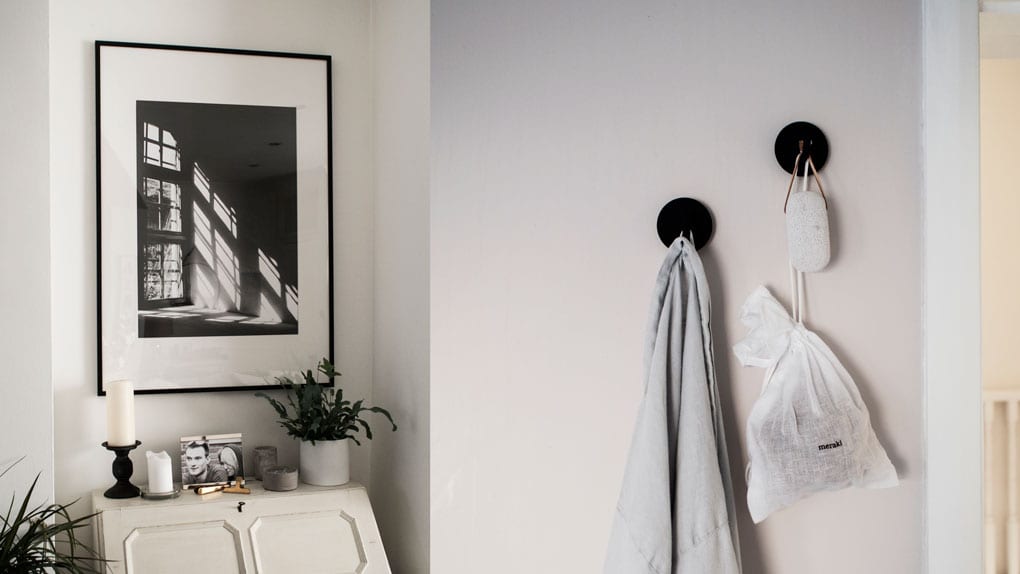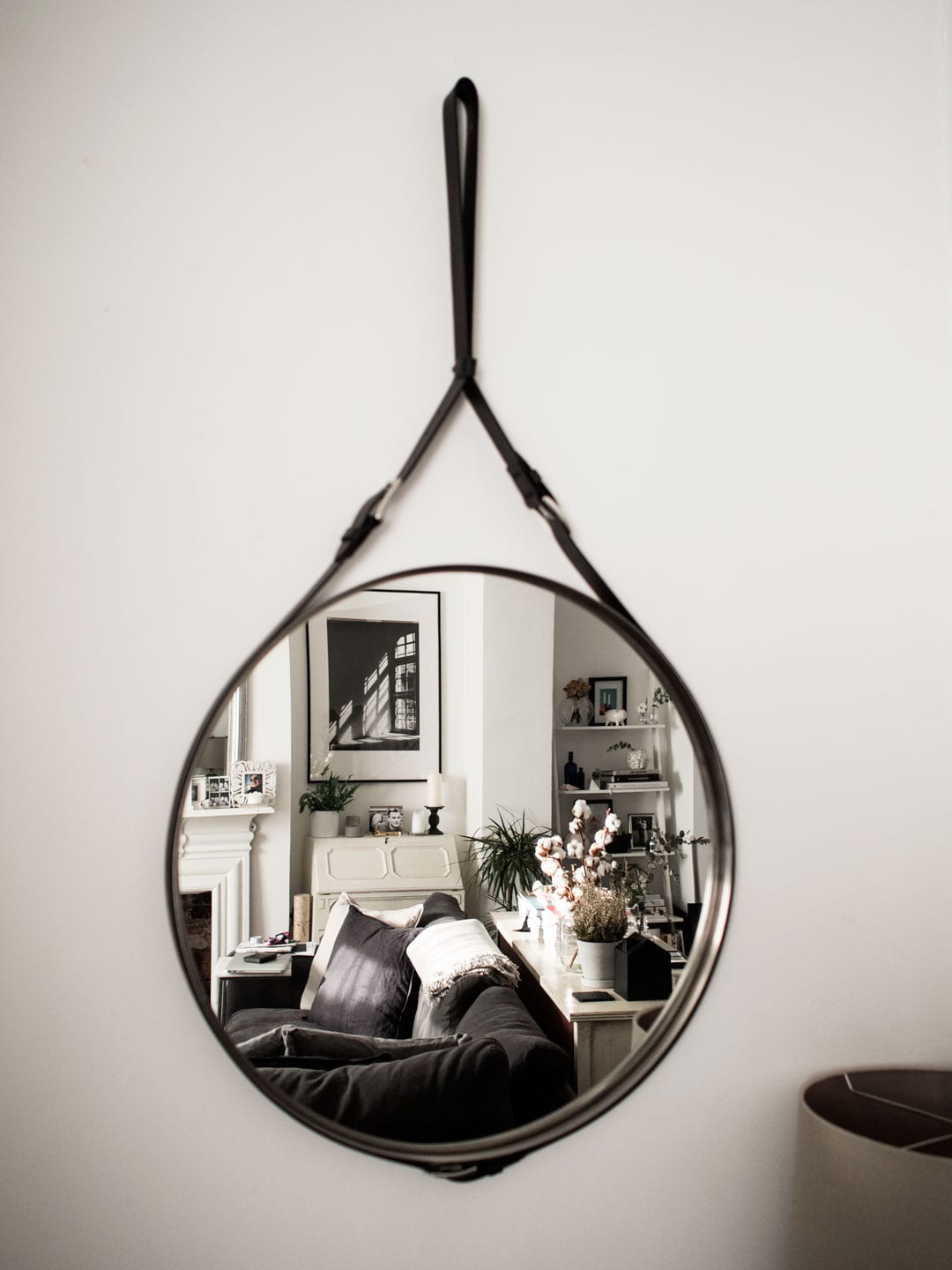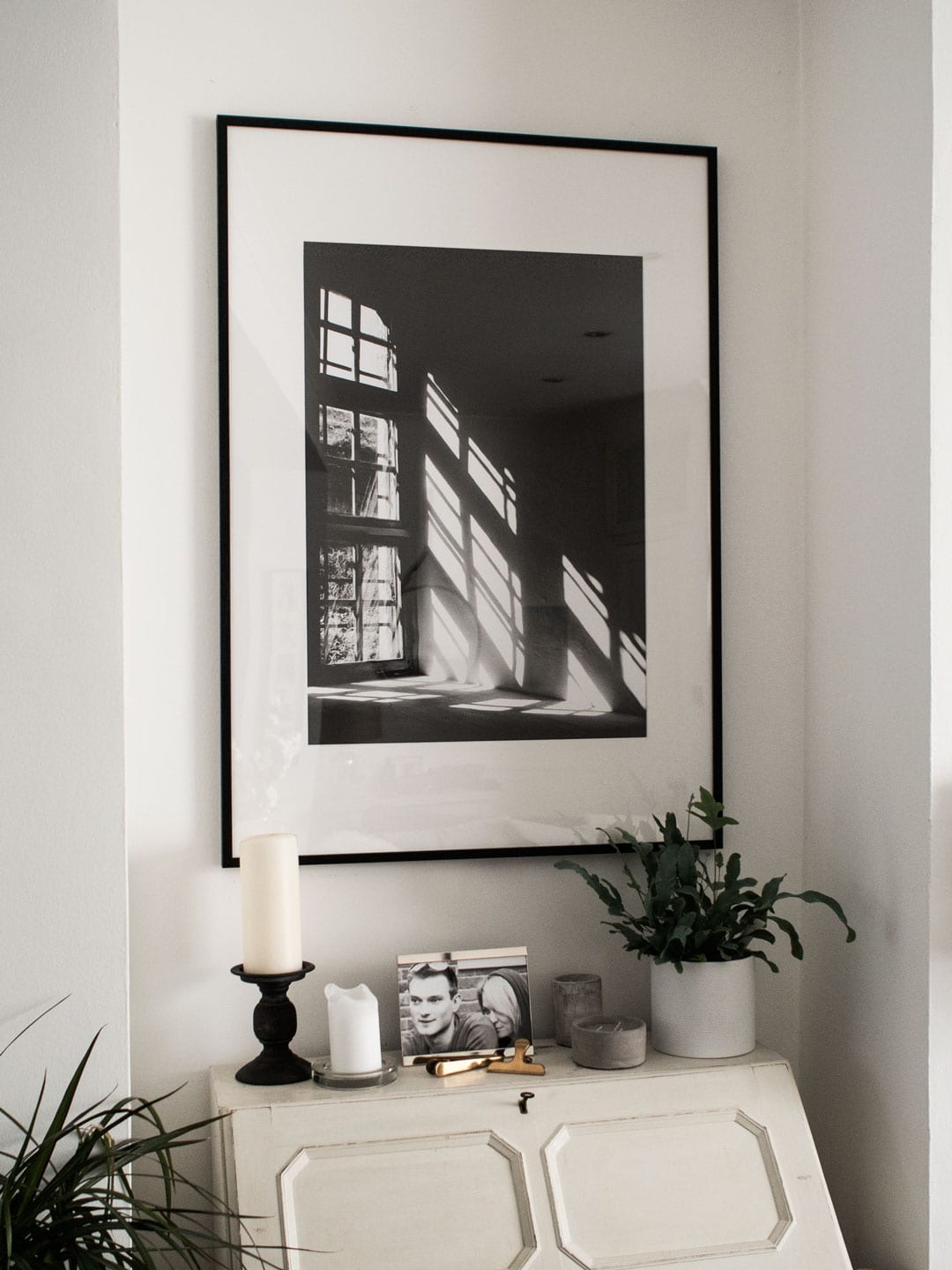


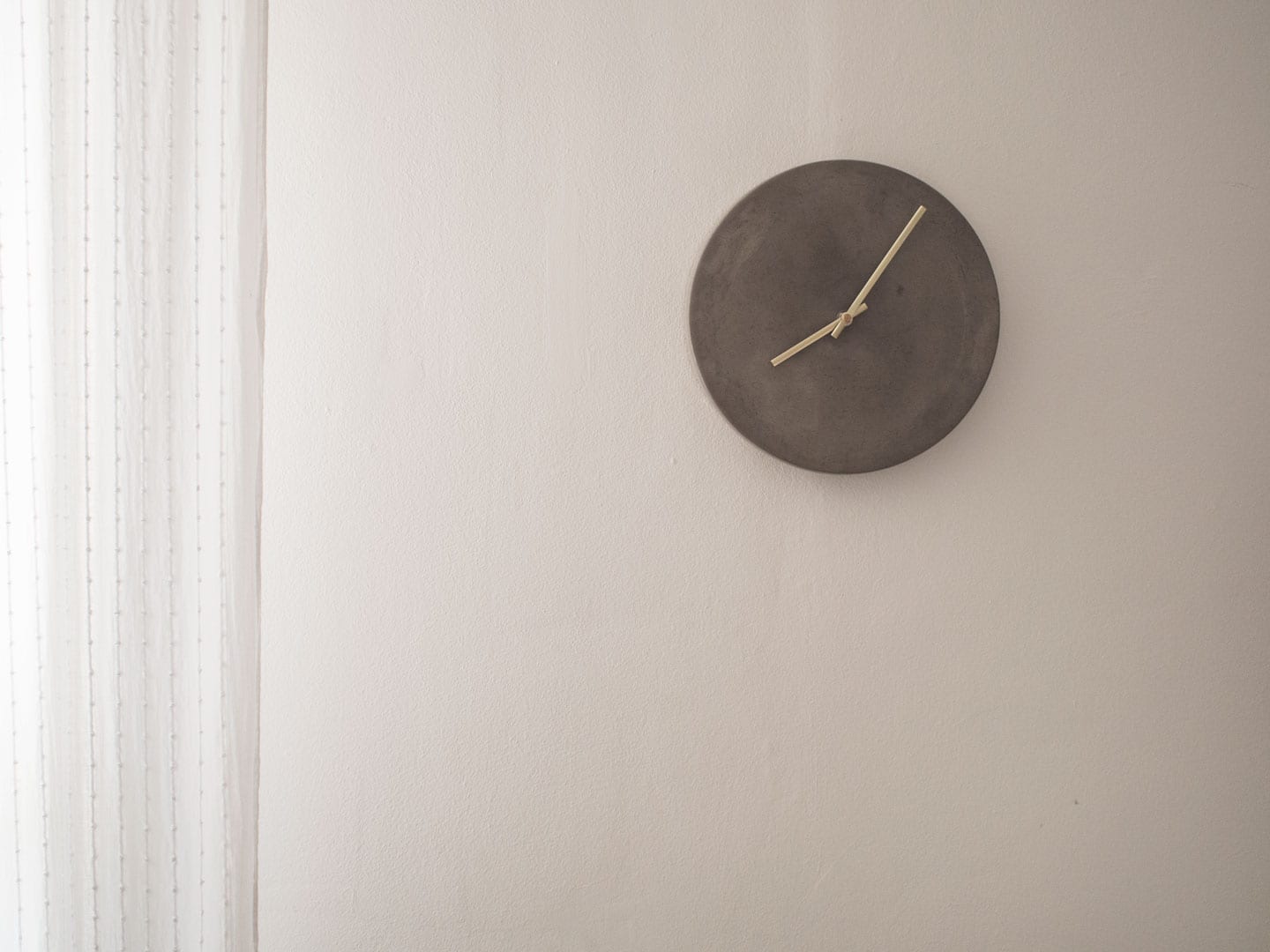
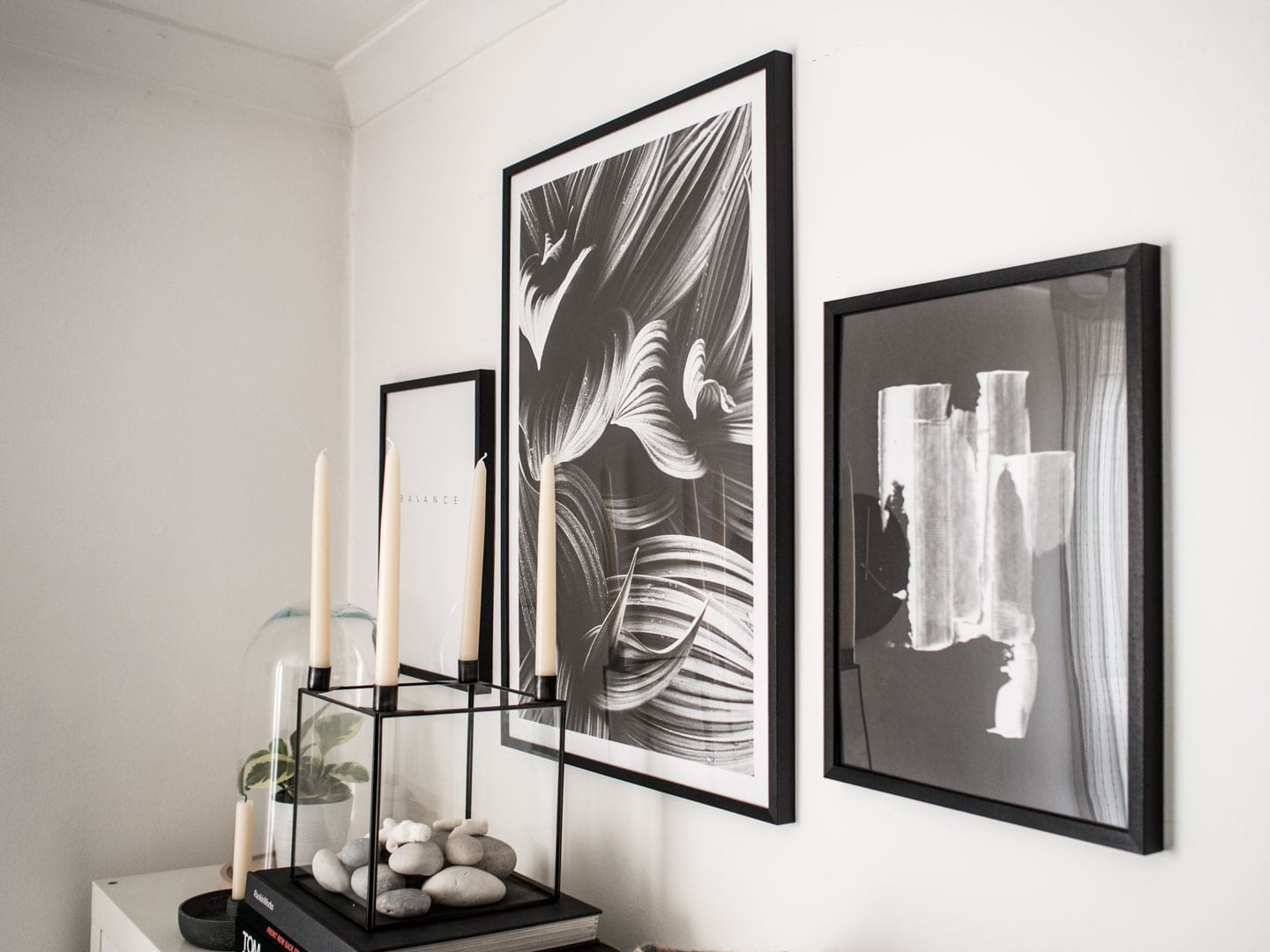


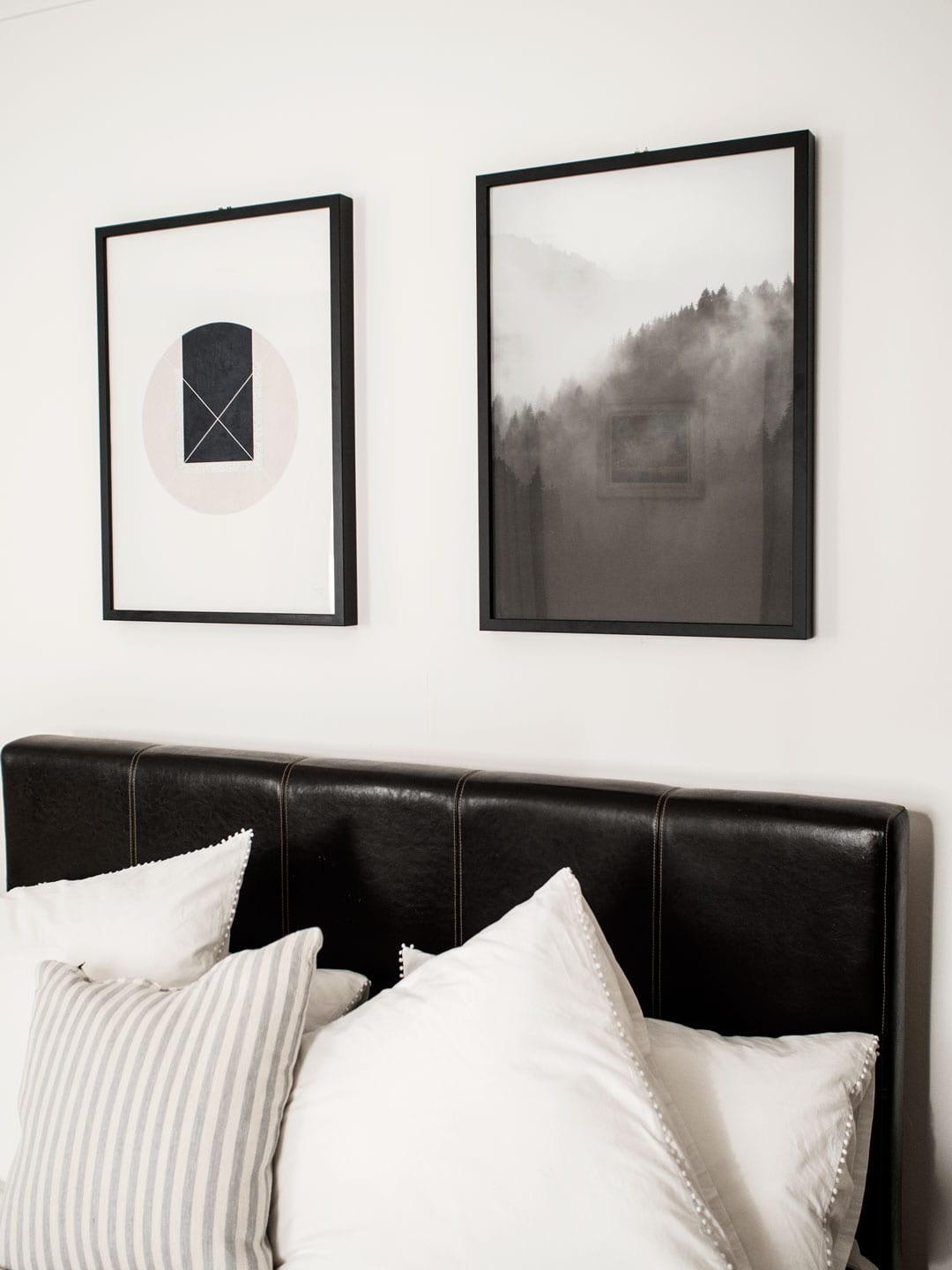
A home never feels quite finished without artwork on the walls, like the books on your shelves, there’s something so personal about what you display on your walls, and what it says about you. It’s really important that it’s something you’re going to appreciate whenever you look at it. When it comes to knowing what works where, how high or low to hang it and how to group things I’ve found that it takes a lot of time and consideration. So I don’t end up with hundreds of holes in the walls I use masking tape and greaseproof paper to give me an idea of what size works where. I’ve also found that lots of websites will give you examples of what prints work well together or what frame suits the print. If not, a set of two or three prints in the same series always look great together. Or try playing with proportions mixing prints of different sizes. If you want to mix and match different styles, black and white prints will usually work well together.
I’m not keen on hanging prints on every wall (I prefer to keep things minimal) so I’ve found that decorative hooks, clocks and mirrors are a great way of breaking things up, as well as being functional. The mirror in our living room was inspired by the 1950s designed Gubi Adnet mirror, which has a fairly hefty price tag. My DIY version uses a cheap IKEA mirror and some leather belts from H&M to create a similar look. It wasn’t until our concrete clock from House Doctor was up that I realised just how useful it is. I love the concrete and brass together, and it looks great on a white wall. I’ve also become a bit obsessed with hooks in the house lately, I don’t think I’d appreciated how useful they were before. There are some great designs available from Scandinavian brands like House Doctor, Muuto and HAY.
